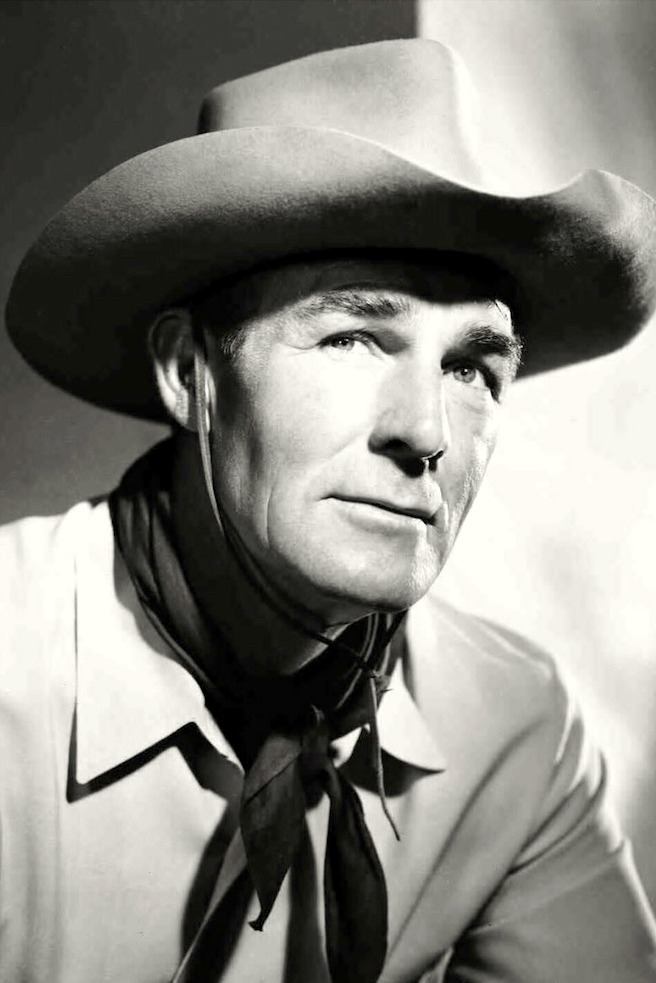
Randolph Scott (born George Randolph Scott, in Orange County, Virginia, USA) was an American actor, best known for his roles in Western films. His career spanned from 1928 to 1962, during which he appeared in over 100 films, with more than 60 of them being Westerns. Scott was raised in Charlotte, North Carolina, in a wealthy family. His father, George Grant Scott, was the first certified public accountant (CPA) in North Carolina, and his mother, Lucille Crane Scott, came from a prominent Virginia family. He attended private schools and excelled in sports, including football, baseball, horse racing, and swimming. During World War I, Scott enlisted in the North Carolina National Guard and later served in France as part of the U.S. Army’s 2nd Trench Mortar Battalion. After the war, he trained as an artillery officer before returning to the United States. Scott initially pursued a career in textile engineering, but his interest in acting led him to Hollywood in the late 1920s. He landed minor roles before securing a contract with Paramount Pictures, where he met Cary Grant on the set of Hot Saturday (1932). The two actors became close companions, sharing a home for several years, which led to speculation about their relationship. Scott and Grant lived together for over a decade, first in a Los Angeles apartment, then in a Beverly Hills home, and later in a Santa Monica beach house. Their close bond was widely discussed in Hollywood, with some believing they were romantically involved, though neither actor ever publicly confirmed this. Photos from the time show them laughing, exercising, cooking, and spending time together, fueling further speculation. Scott’s career flourished in the 1930s and 1940s, with roles in dramas, comedies, musicals, war films, and adventure movies. However, it was in the Western genre that he truly became a box-office star, particularly in the 1950s. His collaborations with director Budd Boetticher in films like Ride Lonesome (1959) and Comanche Station (1960) are considered classics of the genre. Scott was married twice: first to Marion DuPont (1936–1939) and later to Patricia Stillman (1944–1987), with whom he adopted two children. Despite his Hollywood success, he was known for his private nature, preferring to avoid industry events and publicity. After retiring in 1962, Scott focused on business investments, amassing a fortune that allowed him to live comfortably until his passing on March 2, 1987, at the age of 89. Scott remains one of Hollywood’s greatest Western stars, with his stoic, rugged persona influencing generations of actors. His films continue to be celebrated for their authentic portrayal of the American frontier.